-
 +12 +1
+12 +1Scientists discover a surprise rumbling beneath a sacred Hawaiian volcano
New research shows that every 7 to 12 minutes, a small, and safe, earthquake occurs beneath the Mauna Kea volcano on the Big Island of Hawaii.
-
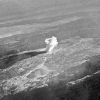 +10 +1
+10 +1The Army Bombed a Hawaiian Lava Flow. It Didn’t Work.
It could be tried again if the city of Hilo comes under threat, although many object to such airstrikes.
-
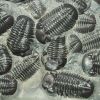 +15 +1
+15 +1AI suggests Earth has had fewer mass extinctions than we thought
The late Devonian mass extinction around 375 million years ago may not have really happened, according to an analysis using machine learning
-
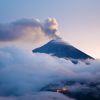 +21 +1
+21 +1Earth's rocks can absorb a shocking amount of carbon: here’s how
The depths of the planet offer a rock-hard potential solution to climate change.
-
 +24 +1
+24 +1Powerful storms may be causing offshore ‘stormquakes’
A perfect-storm mixture of hurricane, ocean and seafloor topography can create distinct seismic signals called “stormquakes.”
-
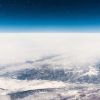 +3 +1
+3 +1The Canadian Subartic Unlocked A Mass Extinction That Happened 2 Billion Years Ago
It was bigger than the one that killed the dinosaurs.
-
 +4 +1
+4 +1Earth's Last Magnetic Pole Flip Happened Much More Slowly Than We Thought
New research suggests Earth's most recent magnetic field reversal took longer to complete than previously thought: around 22,000 years in total. Figuring out why this particular flip was so drawn out will let us better understand this mysterious proc
-
 +3 +1
+3 +1We may not be running out of helium after all
Helium is the second most abundant element in the Universe, but it's relatively rare on Earth – so much so that some have called for a ban on party balloons to ward off a worldwide shortage. However, a team of scientists led by Diveena Danabalan of Durham University conducted a new study that indicates that there may be vast new sources of the gas in the western mountain regions of North America.
-
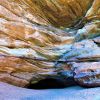 +16 +1
+16 +1Geology Makes You Time-Literate
A scientist tells us how her field instills timefulness. By Marcia Bjornerud.
-
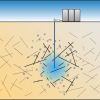 +16 +1
+16 +1Study suggests earthquakes are triggered well beyond fluid injection zones
Using data from field experiments and modeling of ground faults, researchers at Tufts University have discovered that the practice of subsurface fluid injection used in ‘fracking’ and wastewater disposal for oil and gas exploration could cause significant, rapidly spreading earthquake activity beyond the fluid diffusion zone. Deep fluid injections -- greater than one kilometer deep -- are known to be associated with enhanced seismic activity—often thought to be limited to the areas of fluid diffusion.
-
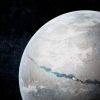 +9 +1
+9 +1Ancient ‘Snowball Earth’ thawed out in a flash
Rocks in China point to a geologically fast melting event 635 million years ago
-
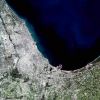 +3 +1
+3 +1The City of Chicago Is Sinking. Here's Why
Ice sheets that receded 10,000 years ago are responsible for the Windy City dropping at least four inches over the last century
-
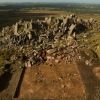 +3 +1
+3 +1Scientists Have Pinpointed The Mysterious Origins of Stonehenge's Epic Bluestones
Almost a century ago, British geologist and archaeologist Herbert Henry Thomas provocatively claimed he knew where Stonehenge's famous rocks came from.
-
 +25 +1
+25 +1An earthquake lasted 50 days, but no one felt it. Here's why.
“You could call them phantom quakes,” one geologist says of the tectonic phenomena known as slow slip events.
-
 +15 +1
+15 +1The Lake Laach volcano in Germany is 'recharging' with fresh magma
Above, a pristine blue lake filled with boaters and swimmers. Below, magma bubbles and swells. What sounds like a Hollywood plot is in fact based on new research by geophysicists in Germany.
-
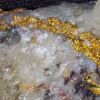 +3 +1
+3 +1Earthquakes Make Gold Veins in an Instant
The process takes place along ‘fault jogs’ — sideways zigzag cracks that connect the main fault lines in rock, says first author Dion Weatherley, a seismologist at the University of Queensland in Brisbane, Australia. When an earthquake hits, the sides of the main fault lines slip along the direction of the fault, rubbing against each other. But the fault jogs simply open up. Weatherley and his co-author, geochemist Richard Henley at the Australian National University in Canberra, wondered what happens to fluids circulating through these fault jogs at the time of the earthquake.
-
 +17 +1
+17 +1This Ancient Dead Bug Could Change What We Know About Opal Formation
The markets of Southeast Asia are common places to find the fossils of insects, embedded in amber millions of years old. But last year, gemologist Brian Berger found something much more rare and astonishing.
-
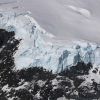 +34 +1
+34 +1Earth is missing a huge part of its crust. Now we may know why.
A fifth of Earth’s geologic history might have vanished because planet-wide glaciers buried the evidence.
-
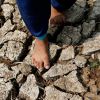 +20 +1
+20 +1Scientists identify vast underground ecosystem containing billions of micro-organisms
The Earth is far more alive than previously thought, according to “deep life” studies that reveal a rich ecosystem beneath our feet that is almost twice the size of that found in all the world’s oceans. Despite extreme heat, no light, minuscule nutrition and intense pressure, scientists estimate this subterranean biosphere is teeming with between 15bn and 23bn tonnes of micro-organisms, hundreds of times the combined weight of every human on the planet.
-
 +44 +1
+44 +1Strange waves rippled around the world, and nobody knows why
Instruments picked up the seismic waves more than 10,000 miles away—but bizarrely, nobody felt them.
Submit a link
Start a discussion




















